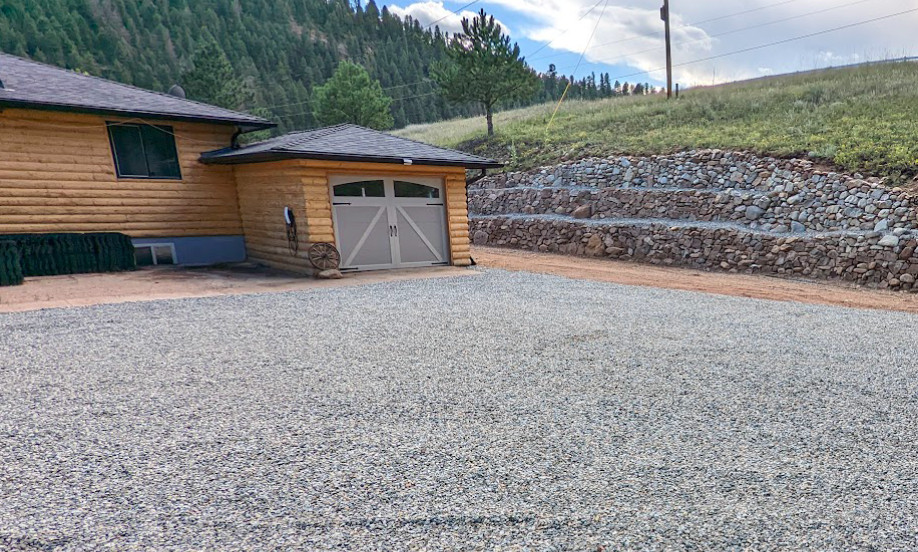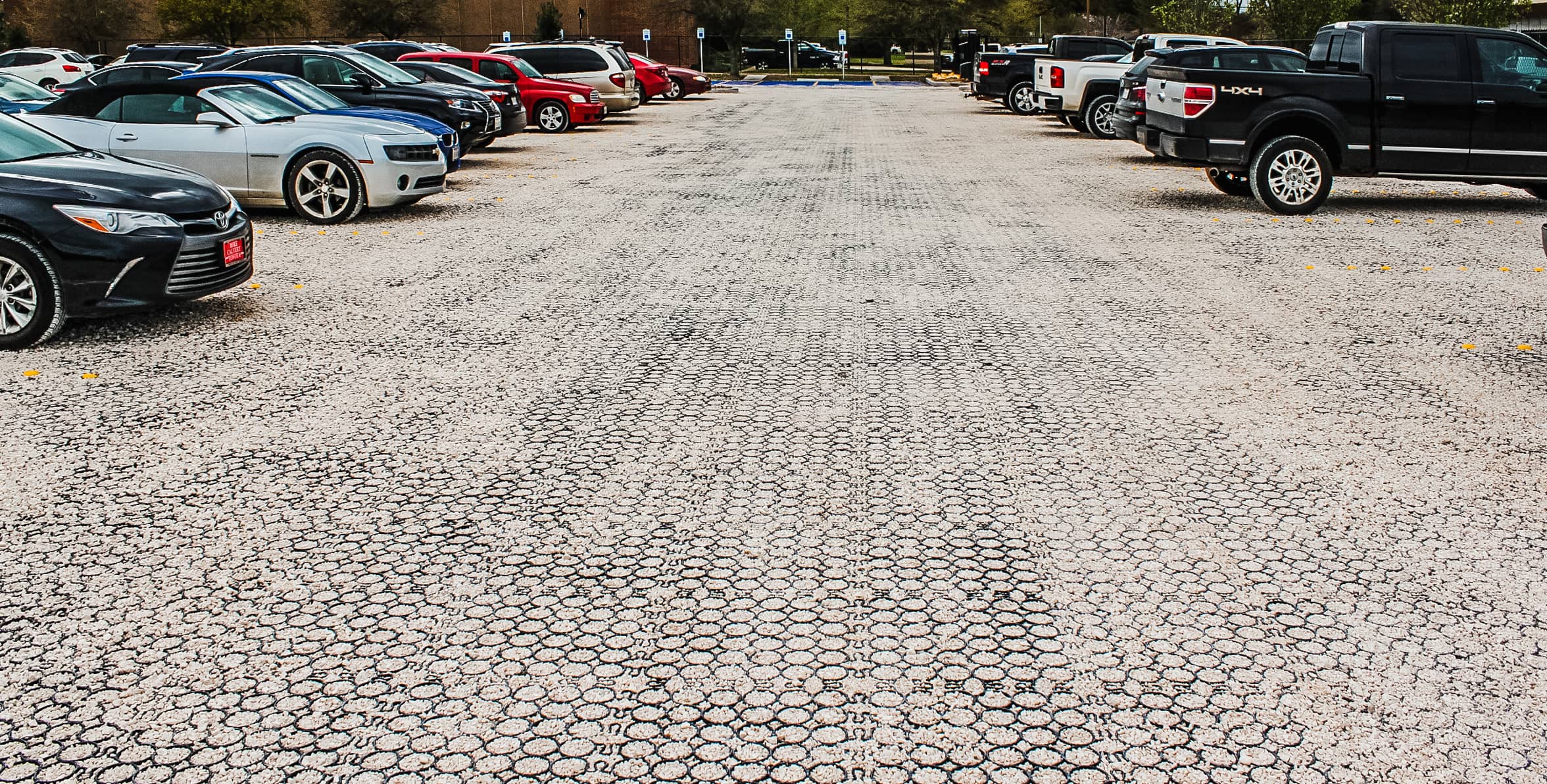
Are you thinking about installing a DIY gravel driveway on your property? If so, keep in mind that you can create a durable and attractive driveway without breaking the bank.
Here’s what you need to know about DIY gravel driveways, including how to install them.
(We’ll even talk about a DIY gravel driveway alternative at the end.)
Are you ready to get started?
Let’s jump in!
DIY Gravel Driveways
A DIY gravel driveway is a popular choice for homeowners who are looking for a cost-effective driveway solution.
These driveways consist of multiple layers of gravel, which create a solid and permeable surface that can handle the weight of vehicles and allow water to drain away naturally.
How Much Do DIY Gravel Driveways Cost?
One of the biggest advantages of DIY driveway gravel is its cost-effectiveness.
On average, gravel costs about $1–$3 per square foot, which makes it one of the most affordable driveway materials on the market.
That said, costs can vary based on the type of gravel you choose and the region you’re in. And don’t forget to factor in any other potential expenses, such as tools, edging materials, and equipment rentals.
But overall, a gravel driveway DIY is a budget-friendly option.
The Challenges of DIY Gravel Driveway Drainage
However, although DIY gravel driveways are affordable, there are several challenges that come with them, including:
Proper Drainage
Without proper drainage, water can pool on your driveway and cause erosion, potholes, and a generally uneven surface. DIY gravel driveway requires careful planning for the drainage to flow effectively.
Driveway Edges
It’s also easy to overlook the importance of driveway edging. However, without a proper DIY gravel driveway, your gravel could start to spread into your yard, leading to an unsightly mess.
A Step-by-Step Guide on How to Install a DIY Gravel Driveway
Before you start installing your DIY gravel driveway, let’s walk through the steps you’ll need to follow to build a gravel driveway that stands the test of time.
1. Measure Your Driveway
Begin by measuring your driveway area. This will help you determine how much gravel and edging material you’ll need. Be sure to account for any curves or unusual shapes.
2. Purchase Your Gravel
Select your gravel based on your driveway’s needs. But you will typically need three layers:
- Base layer of larger stones (or road base in some cases)
- Top layer of gravel
Quick Tip: Order slightly more than you think you’ll need to account for settling.
3. Gather Your Tools and Supplies
Ensure you have all the necessary tools and materials before starting. This includes a shovel, a wheelbarrow, a rake, gloves, a compactor—and more! Also, don’t forget your edging materials and any drainage components you’ve decided to use.
4. Mark the Driveway Boundaries
Use wooden stakes and string to mark the boundaries of your driveway. This will help you visualize the final product and keep your edges straight as you work.
5. Excavate the Driveway Base
Dig out the topsoil and any soft spots along your marked boundaries to a depth of about 6-8 inches. This excavation creates a solid foundation for your gravel layers.
6. Install the Driveway Edging and Additional Drainage (if needed)
Place your edging material along the boundaries of your driveway. Be sure to secure it firmly to ensure it will hold up against the pressure of the gravel and any traffic on your driveway. Perforated pipe wrapped in fabric or other pre-fabricated drainage components can be place to provide an escape for water from low spots or poor draining soils.
7. Install a Landscape Fabric for Weed Prevention
Lay down a membrane over the excavated area to prevent unsightly weeds from growing through your gravel. This step is absolutely important for maintaining a clean and low-maintenance DIY gravel driveway.
8. Spread and Compact the Base Layer
Start with your largest stones, spreading them evenly across the entire driveway area, and use a compactor to press the stones firmly into place. This may require compacting several time in lifts.
9. Spread and Compact the Top Layer
Finally, spread your top layer of fine gravel across the driveway. Compact this layer as well to create a smooth, finished surface that’s ready for use.
Looking for Something More Stable?
If you’re concerned about the long-term stability of your DIY gravel driveway, consider combining traditional gravel with TrueGrid permeable pavers.
Our permeable pavers provide a solid framework that locks your gravel in place, which reduces the risk of shifting and erosion.
No more top-dressing or replacing gravel every 2 to 4 years with traditional gravel drive. TrueGrid infill is meant to last and is very, very low maintenance.
Not to mention, our TrueGrid Pro Lite permeable paver system is an excellent choice for residential driveways because it’s both durable and easy to install.
For commercial projects, check out our TrueGrid Pro Plus. And if you’re looking for something that allows grass to grow, check out our TrueGrid® Root® grass paver system or TrueGrid PRO LITE with Grass infill.
Create the Best DIY Gravel Driveway System with TrueGrid Permeable Pavers

Ready to build a driveway that lasts?
By incorporating TrueGrid permeable pavers into your DIY gravel driveway project, you’re setting yourself up for ultimate success.
Not only do these pavers provide superior stability and drainage, but they also make your driveway more eco-friendly by reducing runoff and promoting groundwater recharge and can last 25 years or more.
Check out our project gallery for some DIY design inspiration, and don’t forget to check out our handy installation guide to ensure your project goes smoothly.
Contact us today to learn more!



